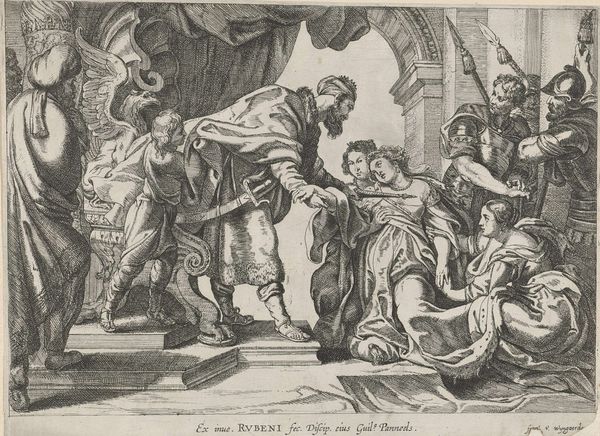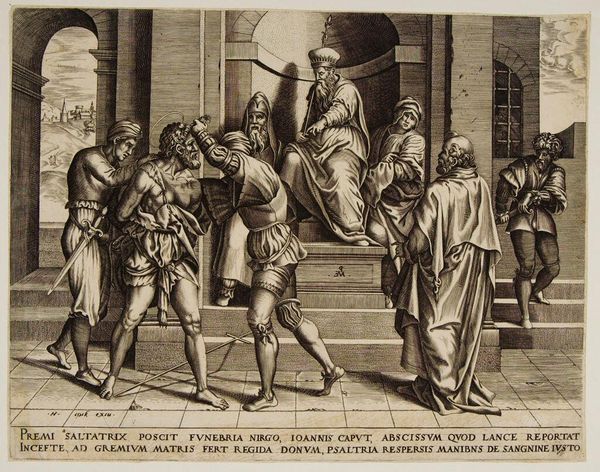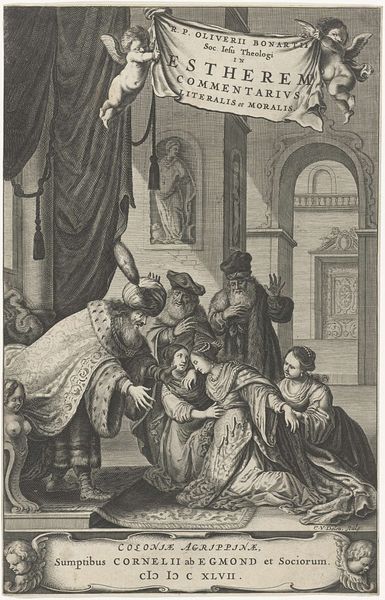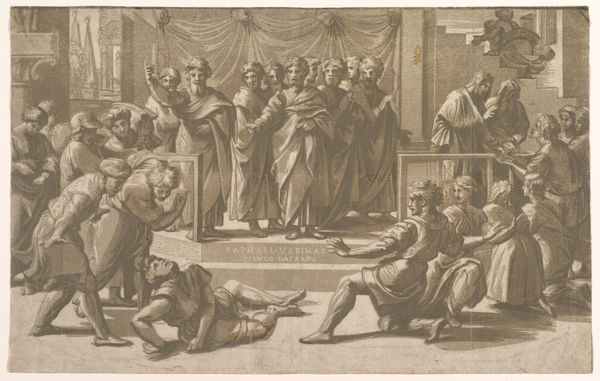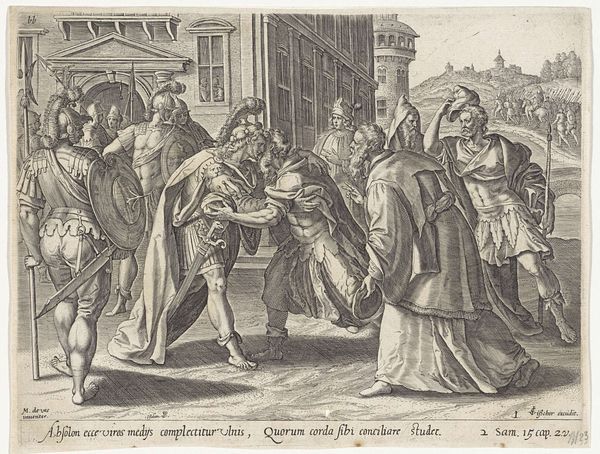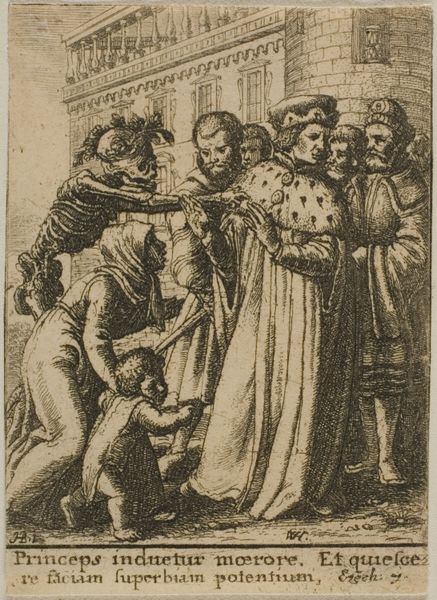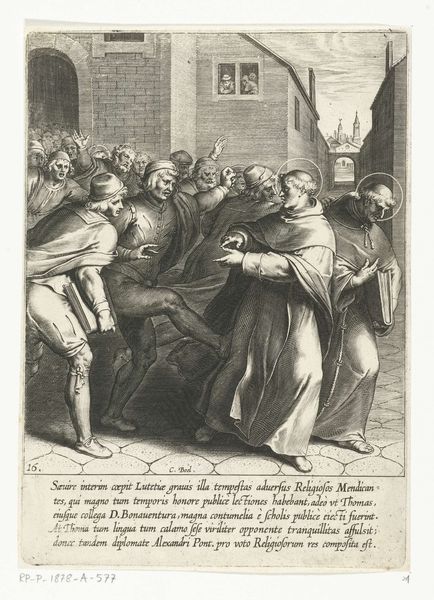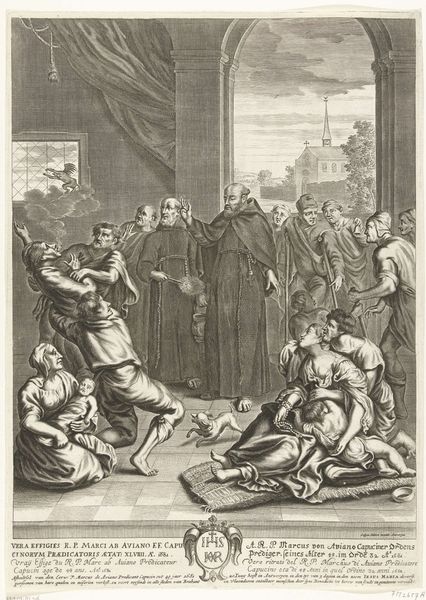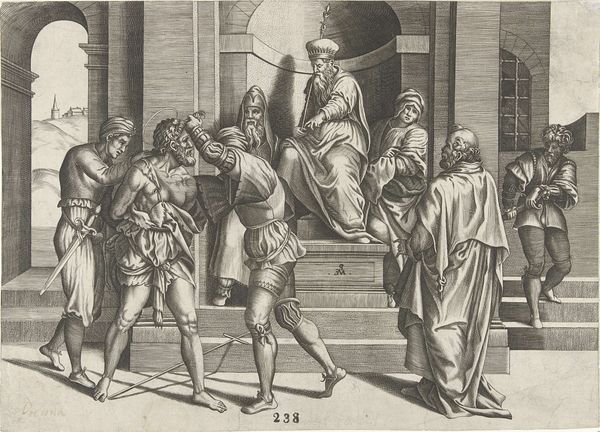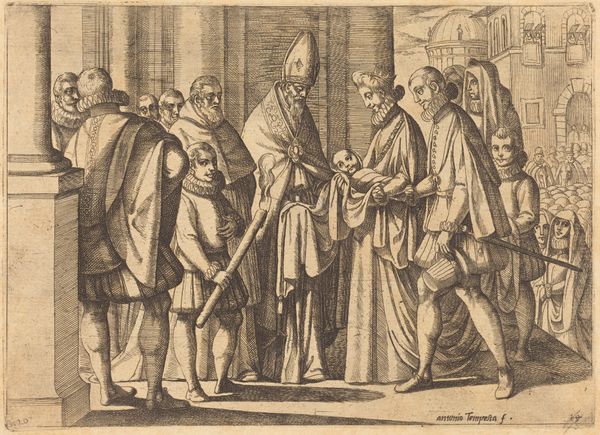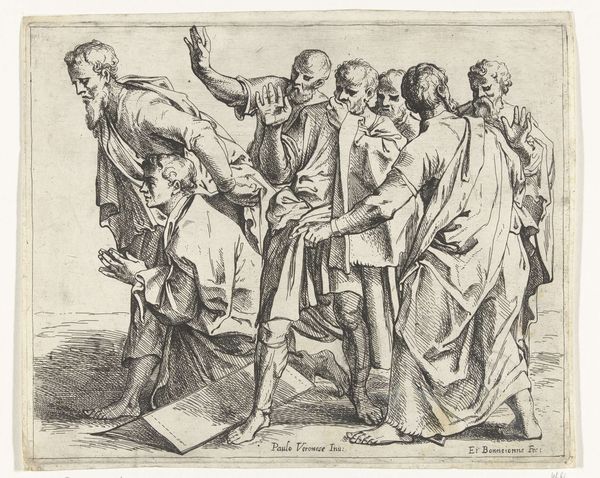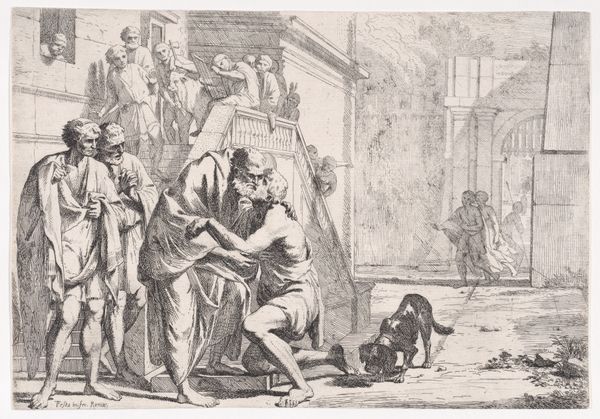
San Salvador de Horta, and inquisitor of Aragon
0:00
0:00
bartolomeestebanmurillo
Musée Bonnat, Bayonne, France
#
portrait
#
baroque
#
figuration
#
oil painting
#
christianity
#
genre-painting
#
history-painting
#
academic-art
#
portrait art
Dimensions: 178 x 190 cm
Copyright: Public domain
Editor: This oil painting, "San Salvador de Horta, and inquisitor of Aragon", by Bartolomé Esteban Murillo depicts a scene with figures dressed in what appear to be period costumes. I am intrigued by the contrast between the standing figure, seemingly in power, and the kneeling man, but I am not quite sure how to interpret their relationship. What do you see in this piece? Curator: Well, let's consider the sociopolitical landscape of Murillo's time. This painting, steeped in Baroque sensibilities, presents us with a figure of authority—the inquisitor—encountering San Salvador de Horta. Consider what the Inquisition represented. It was a system of power that disproportionately affected marginalized groups. How might we view this interaction through the lens of power dynamics and social justice? Editor: That’s interesting. So you’re suggesting that we consider this not just as a religious scene but as a reflection of the power structures of 17th-century Spain? Curator: Precisely. The gaze, the gestures, even the composition all contribute to a narrative of dominance and submission. Who benefits from this image, and whose voices are silenced or amplified? And further, I encourage one to consider how faith serves to negotiate social capital in the world that Murillo reflects and shapes. Editor: I hadn't considered the figures in the background as being witnesses in a way. It brings up issues of class and perhaps even race. The artist is really commenting on the power structures by the way he arranges them in the image. Curator: Indeed. By engaging with these complexities, we move beyond a simple biographical reading of the painting. The scene reflects broader issues that remain deeply relevant in our own contemporary social and political reality, even today. Editor: Thank you. I see how approaching art through this lens of social and political context adds layers of meaning and relevance. Curator: Exactly! The power of art resides in its ability to provoke dialogue and critical inquiry that has bearing beyond the boundaries of the canvas.
Comments
No comments
Be the first to comment and join the conversation on the ultimate creative platform.
